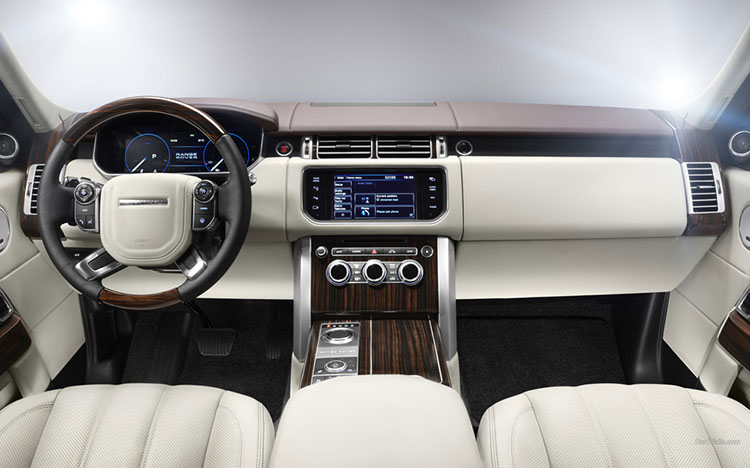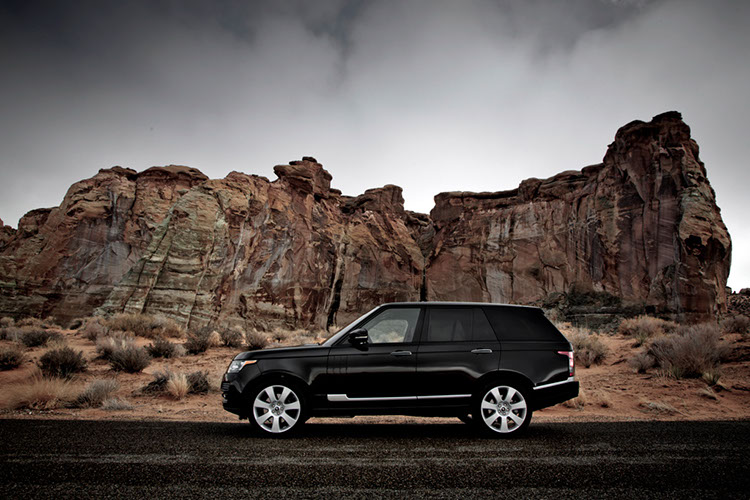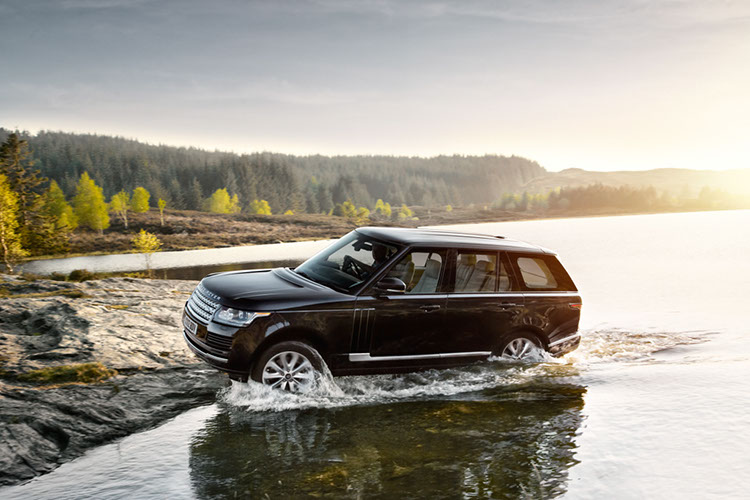
In 1970, while North American automotive manufacturers were building some of the most memorable muscle cars on earth, and the Italians were assembling some of the most achingly beautiful sports cars the world would ever see, the British were building perhaps the most influential vehicle ever: the Range Rover. The brand's first vehicle that placed on-road comfort above off-road prowess, the early Range Rover was a glimpse into what would become one of North America's most popular market segments: the sports utility vehicle. Despite the high price tag on these vehicles, people wanting one can probably still get their hands on one by looking at websites with used cars for sale. These are luxurious cars, however, it doesn't mean that they are restricted for people only buying them brand new.

But like so many previous models of Range Rover, you'd probably never it know it from just looking at this hulking, homogenous shape of the latest model. Having moved the brand's styling language away from the more geometric proportions they'd relied upon since 1970, the 2014 model has curves instead of corners, and trades the outgoing Range Rover's stately flanks for more barrel-shaped sides. Truth be told, it's not an improvement to many peoples' eyes, and while elements like the headlights and grille are certainly more modern than they were previously, the overall shape lacks the simple stateliness and stoic character that landed Range Rover the auspicious title of being the only vehicle to be displayed in the Louvre art museum in Paris until very recently. The most telling departure is the belt line. While previous models of Range Rover maintained a relatively level beltline, the latest one has a beltline that slowly angles upward from the hood's leading edge to the rear corner. Combined with the more pronounced fender flares at the back, it makes the truck looks a bit less hard-nosed from most angles, but is a necessity in the world of pedestrian crash safety standards and low front ends.
If the exterior is extreme in it's understatedness, the inside is, as they say, is where the magic happens. Opening the massive (seriously; they're incredibly thick) and heavy doors, the cabin's opulence if obvious. You don't even need to slide into the big captain's chair to understand why Holland & Holland partnered with Range Rover to produce a special edition vehicle; these things are old-world luxury at its finest. Between the giant leather chairs, the softly upholstered armrests, and the incredible sound-dampening characteristics of the cabin, piloting the Range Rover is like taking a trip while seated in an oak-panelled library on an English estate... only one that's capable of hitting almost 100 kilometres per hour in just 5.1 seconds. The windows are all double-paned with a laminate layer between the two panes to reduce sound pollution getting into the cabin, the leather is soft, supple, and very well textured, and the commanding view lends a certain air of superiority to the entire experience. The only thing interrupting the downright Victorian experience imbued by the quiet and calming cabin is the thumping of the massive standard-issue 21" wheels and tires over pavement irregularities, but we suspect that won't dissuade many buyers from opting for the optional and even larger 22" wheels.
It doesn't take long before the oak-panelled library becomes something more akin to MI6, as the Range Rover comes to life and begins demonstrating some of the less obvious features that help justify the as-tested $126,XXX price tag. First off, there's a fridge under the centre console. Yes, a real refrigerator, not simply a box into which the air conditioning is plumbed. Also, after driving for a few minutes, the front seats (which already benefit from all sorts of power adjustments including adjustable side bolsters) begin an automated massage program (one of three selectable programs) in which rollers slide beneath the seat's leather to keep you relaxed while you drive. Looking over the burly and heated steering wheel as well, more James Bond-esque features become apparent in the instrument binnacle, which is actually an LCD screen binnacle since all the gauges are virtual. The same goes for the heater controls, where LED readouts positioned within the actual temperature adjustment dials inform each passenger what their specific area of the four-zone climate control system is set to.

But's not perfect. For example, it desperately needs a new gas pedal or a remapping of the throttle position sensor. On our tester, initial pedal travel did nothing, while pressing slightly further was met with a overzealous acceleration. The same situation arose under braking, where strange throttle and brake pedal response made it difficult to bring the big Rover to the smooth and regal stops it's passengers undoubtedly expected. Likewise, we encountered some strange behaviour from the automatic door pulls (if you half-latch a door, a motor pulls the door in the remainder of the way), the sun visor always wanted to pivot into the driver's forehead whenever you tried to fold it back up, and one interior trim panel popped off and had to be clipped back in. But being a press car, it's hard to say how many of these issues, besides the gas pedal issue, were due to some sort of previous treatment.
While all those luxury features are certainly nice, there is one thing that's always set Range Rover aside from its competitors, and that's its ability to cover all manner of terrain regardless of the conditions. In this case, make sure that you vehicle is insured to prevent any damage that may occur in dangerous conditions. There are plenty of websites out there to cover you but if its van insurance you're after in particular, then head on over to moneyexpert.com to discover their policies. To that end, this new model boasts the latest version of Land Rover's now-familiar Terrain Response System. This allows the driver to adjust the vehicle's various systems to suit the terrain. Selecting the various modes adjusts everything from the suspension height, to the throttle response, to the transfer case mode, to the transmission shift logic, to the electronic driver aids, to the differentials... you get the idea. And it's not exactly lip service. Just for comparison's sake, put next to the Jeep Wrangler Rubicon; a vehicle that many regard as the most capable factory off-road SUV on the market, the Range Rover boasts two more inches of ground clearance and 6 more inches of fording depth at its highest suspension setting. Even so, you may still be tempted to improve the car's off-roading abilities even more by investing in additional parts and components that can improve the suspension. There is some more at Offroad Power Products that you may want to look at if this idea interests you. By making the suspension as good as humanly possible, the off-road abilities of this car could be endless.
In reality though, for most Range Rover owners, the only real benefit to all that off-road technology will be during inclement weather conditions where snowy, obscured, or semi-flooded roads will serve to barely scratch the surface of the big Rover's capabilities. But that's ok too, because thanks to perhaps the single largest difference between this and previous Range Rover products, the new one is even better on-road. And that difference is fundamental... or rather, elemental. See, where old Range Rovers used steel in the body and chassis, this new one uses aluminium extensively. As a result the overall package is a whopping 700 pounds lighter than the outgoing model. And that's definitely going to make a difference on road. It handles better than the old one, accelerates and brakes harder than the old one, and most crucially uses less fuel than the old one.

Overall it's hard not to like a truck that massages you while you drive, can pass just about anything you're liable to meet on the road, and can drive through three foot deep water crossings and over just about any terrain you'd ever encounter. And thanks to the new aluminium superstructure bringing the vehicle's weight down to a reasonable level, it's even easier to justify thanks to its increased on-road performance and economy. Even if you never intend to turn a wheel off road, knowing that you have a comfortable and capable vehicle at your disposal that'll churn through even the worst road conditions Canada can throw at it is comforting, and in that regard there's very few vehicles that can stand shoulder to shoulder with this thing.